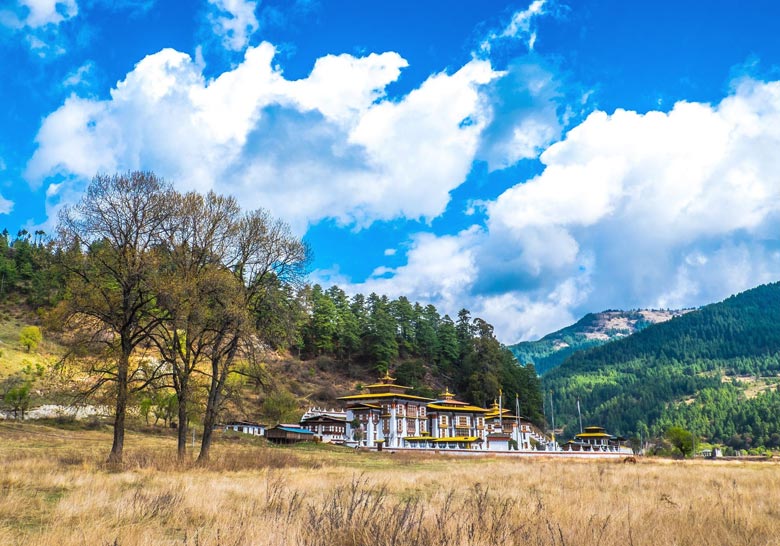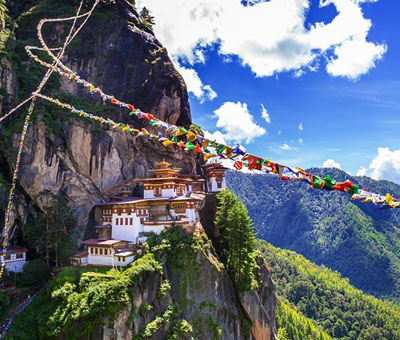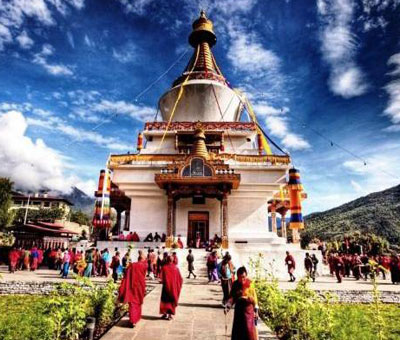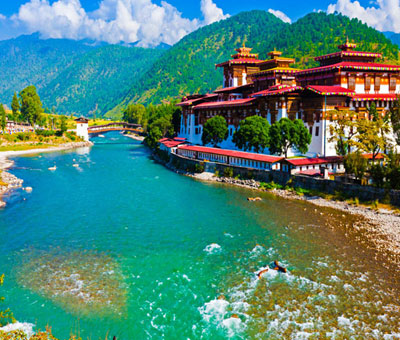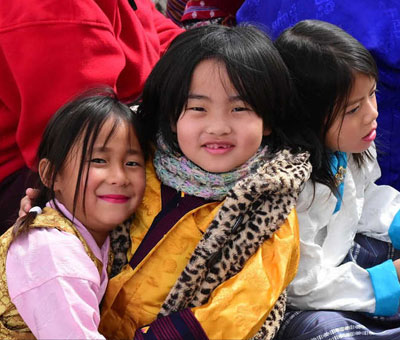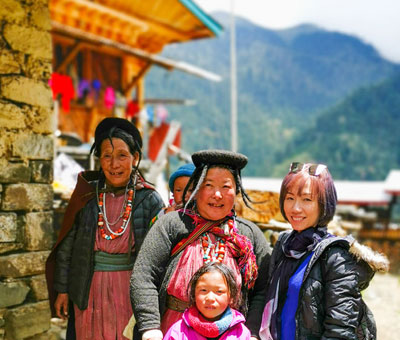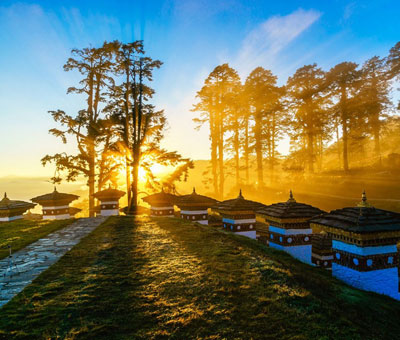Tourist Places Around Bumthang Valley
Unequivocally, the valleys of the Bumthang region are the broadest in Bhutan, creating a feeling of spaciousness. Jakar’s dzong’s and temples get the most attention from visitors, but all of the valleys contain holy temples, villages where women weave on traditional pedal-driven looms, and trekking areas with magnificent views of the surrounding peaks and the pink and white carpet created by the flowering trees of apple, peach, and apricot orchards.
Bhutan Tour Packages
Pricing and Itinerary
The first valley crossed when arriving from Western Bhutan is Chume, a region known for its weaving, especially yathra, a traditional hand-woven woolen cloth. The valley east of Jakar is Tang. In this remote valley, the paths are lined with mani walls, chortens, and prayer flags. The valley of Ura is southeast of Jakar. It is believed to have been home to the earliest inhabitants of Bhutan. The village of Ura is the last you encounter before entering Eastern Bhutan. Both Tang and Ura are home to herds of yak and sheep.
Bumthang Tourist Places
Chume Valley
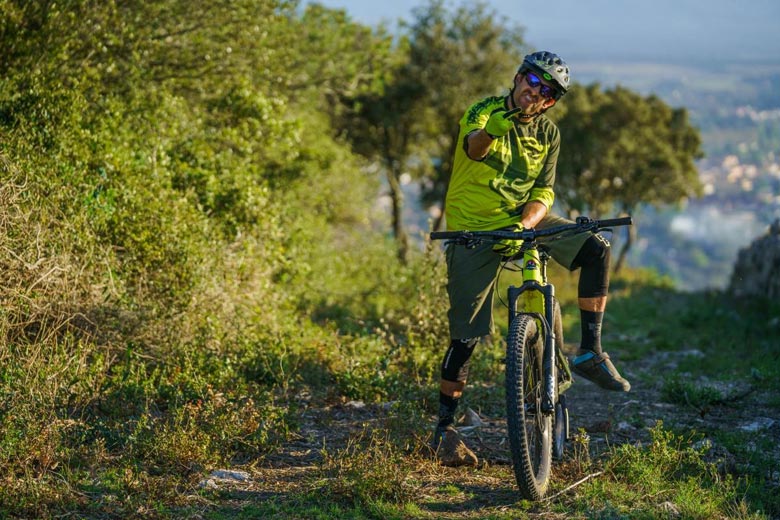
Chume Valley Bumthang
The Chume valley begins at the village of Gyetsa, the first village you encounter in Bumthang when arriving from Trongsa or Western Bhutan. Crops grown in the valley include potatoes, wheat, barley, and buck-wheat. Chumey is also known for its weaving, known as yathra. The rolls of patterned wool are produced mainly in the village of Zugney. The women there weave on pedal-driven looms, following the tradition of their ancestors. Everything, including the dyeing, is done by hand. The women make most of the dyes from plants or minerals, often using “secret ingredients.” The woolen cloth, which comes in a variety of designs, is used to make blankets, cushion covers, even garments. While driving along the road through Chume, you will pass many shops selling these beautifully designed textiles. After you pass through the small town of Zugney, you reach the Kiki La Pass, with its splendid view over the Jakar Valley and Jakar Dzong.
Tang valley
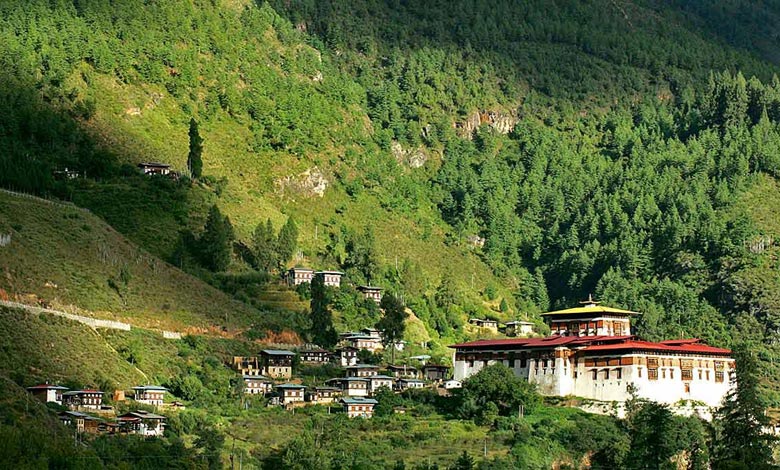
Tang valley
Tang is the most remote of Bumthang’s valleys. Since Tang’s average altitude is 2,800 m (9,185 ft), the climate doesn’t support agricultural endeavors. Therefore most of the people here are yak and sheep herders. From Jakar, Tang is reached by driving 10 km (6.2 mi) along the road that follows the left bank of the river. Just beyond the Dechenpelrithang sheep farm, the road crosses a series of hills and heads north towards Tang.
A short distance off the paved road towards Tang is a small parking area from which you can follow a small path that leads to Membartsho, the burning lake. The lake got its name from the story of how Pema Lingpa found treasures hidden there by Guru Rimpoche in the 8th century. The legend holds that in 1475 many people saw Pema Lingpa enter the river with a torch in his hand and disappear. He re-emerged carrying a small box, with the torch still burning. The miraculous sight inspired faith in many witnesses, and Pema Lingpa’s reputation spread not only within the country but also beyond its frontiers. The lake has become a great pilgrimage site.
It is also possible to reach Tang on foot from the Jakar valley, and walking is certainly the most pleasant way to discover the valley. If you choose to walk, the best place to start is a route that begins just above the Swiss farm (your guide will know the way). The walk takes you past the Kungzandra Monastery, founded by Pema Lingpa in the 15th century. The monastery is on a hillside that rises above the valley. It is believed to be another of the places where Guru Rimpoche meditated.
The walking route towards Tang is lined with chortens, mani walls, and prayer flags, all evidence of the importance of Buddhism in the region. The trail meanders through cultivated fields and fruit trees, and after the Phephe La Pass, drops down through a pine forest into the Tang Valley.
Ura Valley
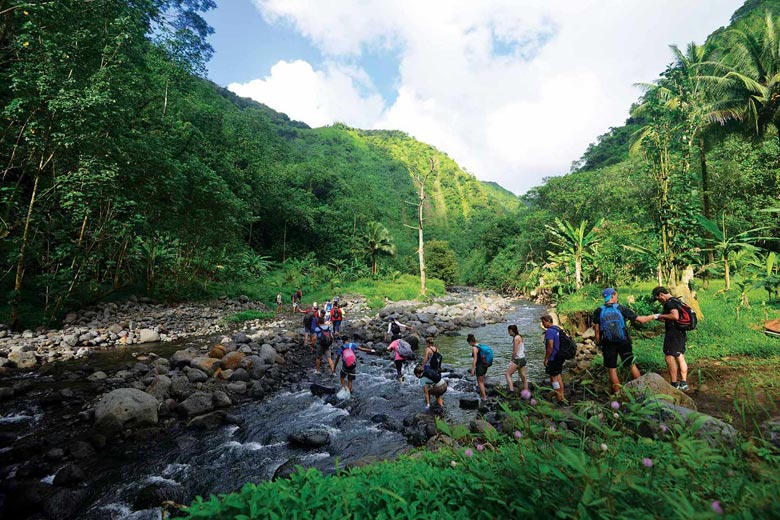
Ura Valley
The fourth and easternmost valley in central Bhutan before the Thumsing La Pass is the Ura Valley. The valley opens out just after the Shelthang Pass (3,600 m/11,808 ft). On a clear day, just before the pass, you get a magnificent view of Gankar Puensum, the highest peak in Bhutan (7,540 m/24,731 ft), its enormous silhouette soaring towards the sky.
The roads descend into the Ura Valley in long, winding loops. Tight clusters of shingle-roof houses, divided by cobblestone paths, give the village of Ura a medieval flair. Above the village is a new temple, founded in 1986, dedicated to Guru Rimpoche. Most residents here work raising yak and sheep, and during the harsh winters the women wear traditional sheepskin shawls that double as blankets. It is believed that Ura was home to the earliest inhabitants of Bhutan, dating back to the prehistoric period. It is the last settlement before the climb to Thumsing La, the highest road pass in Bhutan.
Royal Manas National Park
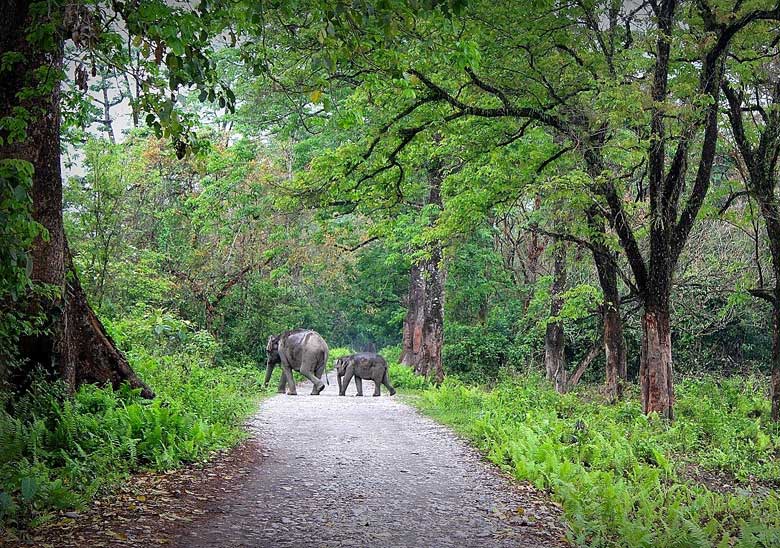
Royal Manas National Park
The 1,023-sq-km (634-sq-mi) Royal Manas National Park (also known as the Manas Game Sanctuary) is on the banks of the mighty Manas. River in south central Bhutan, which forms the border with the India” province of Assam. The vast tropical preserve has been protected as a wildlife sanctuary since 1996 and is home to an astounding variety of wildlife, including tigers, rhinoceros, elephants, leopards, bears, buffalo, several species of deer, and the unique golden langur, a species of money native to Bhutan. More than 300 species of birds have also been spotted in the park.
At press time, the government was enforcing travel restrictions here for travelers due to the threats posed by separatists groups occupying the border in Assam. Previously, the park was open for treks, wildlife safaris, and bird-watching groups. Check with your travel agent or tour guide for the current situation.
Bumthang Sightseeing Places
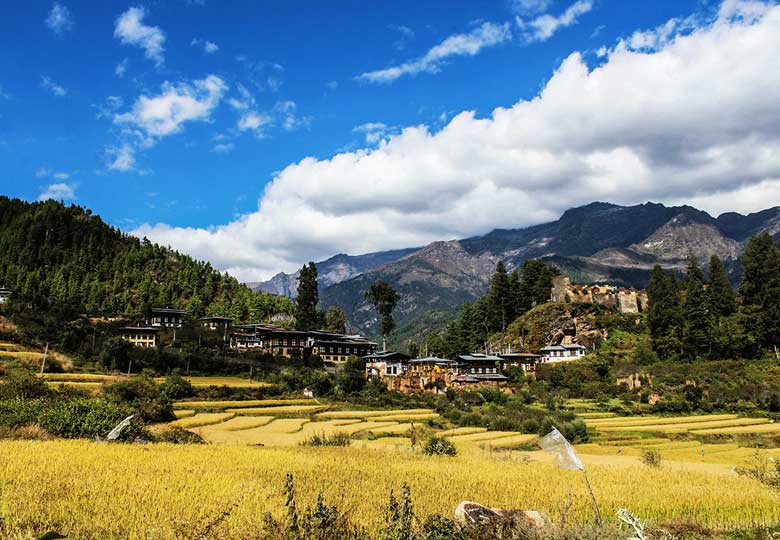
Bumthang
If Bhutan is attractive, Bumthang is extremely eye-catching travel destination. Its four high respected valleys are covered in forests that embrace small monasteries, chortens, traditional stone houses, and marketplaces.
Next to hospitality, Bhutan’s highest art forms are its traditional textiles and crafts. While many places produce fine examples of both, Bhutan’s superlative wood carvings, masks, gold- and silverworks, paper, and religious paintings are near sole, both in fineness and in the fact that they are made to be used by the people themselves, rather than snapped up by the busloads of travellers we’re happy to avoid in this favored land.
By observing carefully at the Dragon Kingdom’s crafts and textiles in the making, visiting world-class weavers and thangka painters, we find ourselves learning a marvelous lot about the broader culture. Reaching through the landscape, staying in local guesthouses, making day hikes to remote villages and hidden valleys, we get a good expression at not only art-making, but also art-using. Bhutan’s people wear these wonderful textiles and gold and silver bits and pieces; they humbly display and use the paintings and masks their fellow artisans make.
For more information on Bumthang and other Bhutan tour packages contact Swan Tours – one of the leading travel agents in India.
